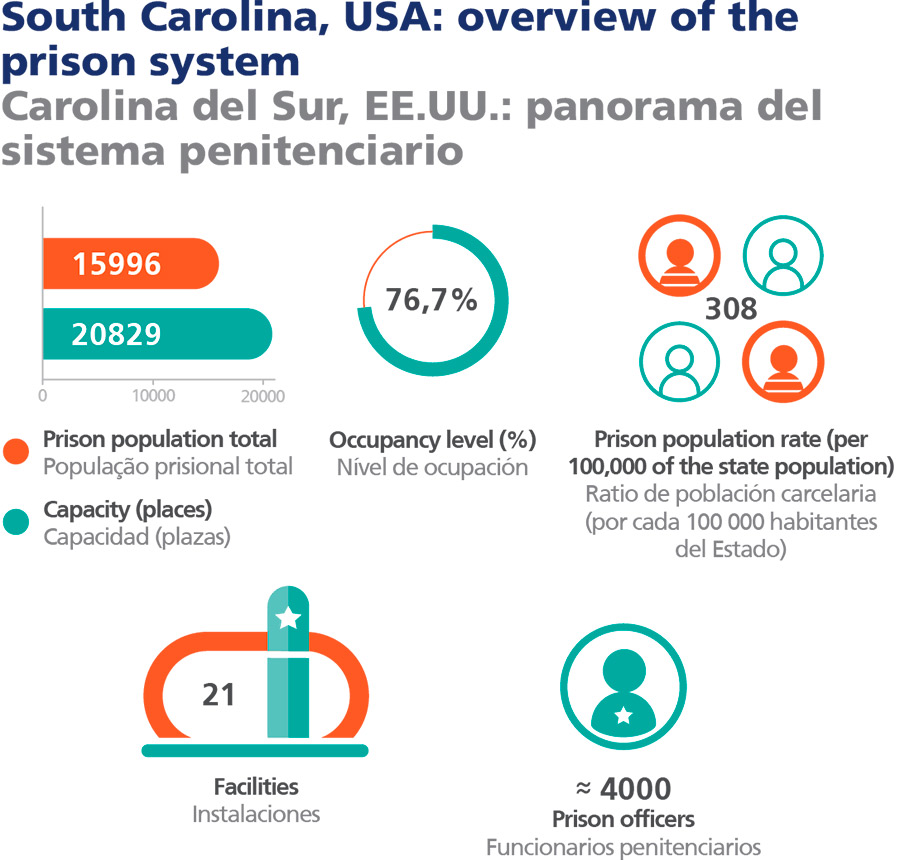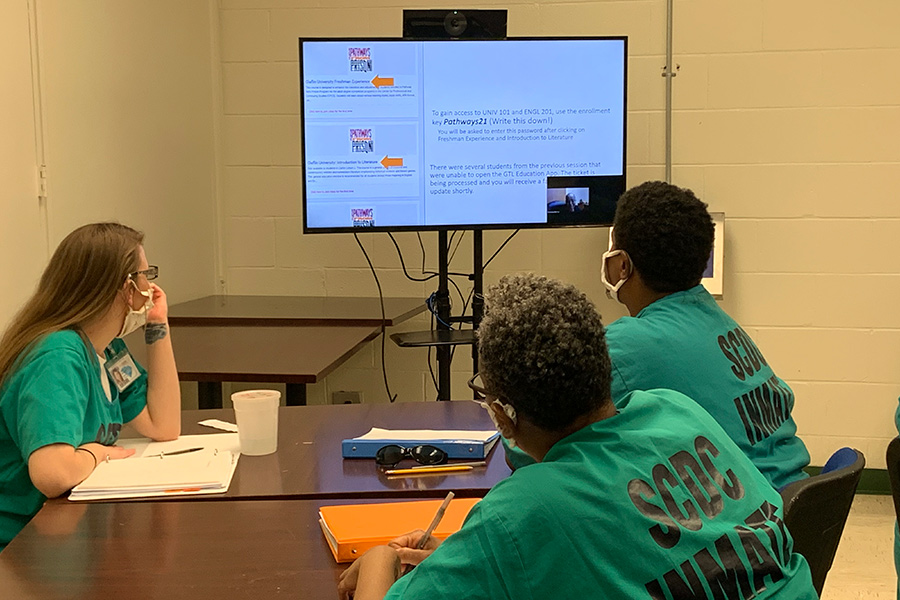Interview
Bryan Stirling
Director, South Carolina Department of Corrections, USA
What are the main challenges and priorities for the South Carolina Department of Corrections (SCDC)?
BS: We face several challenges, but staffing is a significant issue. It is difficult to hire and retain the right staff, therefore we are lacking prison officers, staff for re-entry programs, and medical staff.
As a response to this issue, the South Carolina General Assembly took action in 2022 passing legislation that authorised historic raises for security staff. There was another salary increase this year. As a result, starting salaries for correctional officers have nearly doubled since my appointment to head the agency in 2013.
We have already had some positive effects, with staffing and retention on the rise. Between July and December of 2022, we were able to hire over 150 more officers than we lost. However, there is still a shortage of available personnel to fill critical roles. I would argue that every prison system in the country is having this problem.
Another challenge we face is the use of drones to drop contraband, including cell phones. These contraband operations are highly sophisticated and the technology employed is continually evolving.
Drones possess the capability to fly for over five miles and some can transport between 15 to 20 pounds of weight. Additionally, unlike what happens in other countries, we cannot block cell phone signals, as it is prohibited by our federal government. This contraband allows inmates to continue their criminal activities from behind bars using illegal cell phones.
One of our priorities is providing programs to help inmates safely reentering society. In fact, reducing recidivism has been my main focus since I took over the Department. Our success in having the lowest return-to-prison rate in the country is due to the programs we offer, and we take great pride in that achievement. Ten years ago, before I began my tenure, the recidivism rate was at 32%.
Through our efforts, we have managed to reduce it to under 20% and we are continually striving to do even better.
This is important because 85% of people in prison are released in under five years. We need to ensure that they have the necessary skills to succeed in the workforce and avoid recidivism.
Our success in having the lowest return-to-prison rate in the country is due to the programs we offer, and we take great pride in that achievement.

What initiatives or programs implemented by the department helped achieve one of the lowest recidivism rates in the country?
BS: In our prisons, everyone who has been incarcerated goes through a re-entry process, which varies in length. For low-level offenders, the process lasts for six months. For medium to maximum-security offenders, it’s a two-year process.
We collaborate with various agencies and organisations to assist individuals with this process. For instance, we work with Catholic Charities to find suitable housing upon release, with the Department of Employment and Workforce to find jobs, and with the Department of Motor Vehicles1 to guarantee they have appropriate identification.
We also work with the State’s healthcare agency to ensure that they’re covered with insurance. This is especially important for individuals with mental health issues, who need to continue receiving the same level of treatment that they were getting in our care, or they may fall back into crime.
Additionally, we collaborate with the community and second-chance employers to provide career opportunities for newly released inmates.
Finally, we strive to connect them with their families to establish a support system as they transition back into society. In order to achieve this, we provide inmates with tablets to make private phone calls and connect with their loved ones. Additionally, we promote family visits and have set up video conferencing equipment to enable inmates to interact with their families face-to-face.
Our classification system has been revamped, allowing individuals to work while incarcerated and earn money for their first months’ rent, transportation expenses, and other costs associated with their re-entry.

I believe that providing inmates with a career path is a powerful way to prevent future crimes.
What role does technology play in supporting the mission of the South Carolina Department of Corrections?
BS: During the COVID-19 pandemic, we have been able to deliver education classes, using tablets that are sanctioned for inmates and provide video visitation.
To enhance security, we have an extensive security camera network that allows us to monitor our prisons around the clock.
We use a system, which allows our staff to click on a device to prove that they have patrolled around a specific area, such as a dorm or prison yard. This system is especially useful in a scenario where there is a lack of staff or supervisors to monitor activity.
We also use technology to help us with the contraband issues. Like most prisons in the United States, our facilities have scanners similar to those in airports that screen inmates using an X-ray machine upon entry. Moreover, we have implemented detection technology that uses poles that light up to indicate if an inmate is carrying a cell phone.
We are in the process of installing advanced technology that will assist us in pinpointing drone flight patterns. We’re preparing to implement this system in all of our prisons located throughout the state of South Carolina.
Technology also supports our work in the healthcare area. We have electronic medical records which enable us to work with medical providers, including when an inmate requires medical attention outside the facility.
We also have telehealth and telepsychiatry visits that ensure they can get treatment safely and minimise the need for inmates to be transported out of the facility. Furthermore, we have also implemented a digital program that uses positive reinforcement to help inmates with substance abuse.
This program uses software that allows patients to receive on-demand therapy under the supervision of a clinician. It includes treatment lessons evaluated through quiz questions and metrics for the reporting of cravings and triggers. Patients are rewarded for completing lessons and achieving negative drug screens during the 12-week treatment period.
Overall, the corrections sector has been resistant to adopting new technology for a long time. It seems that in the United States, if something was done a certain way 100 years ago, it's still being done that way today.
What are the stand-out challenges in implementing these technologies across the prison system?
BS: Some of the challenges to the implementation are related to funding, as they require significant investment.
This means that we have to convince our legislators to allocate the necessary resources to make it happen. Additionally, the process of change itself involves a number of complex tasks in themselves. This includes infrastructure changes needed, for example, to run electricity or the challenge of integrating new systems with existing ones.

Introducing new technology can require adjusting to changes in processes such as inputting information in electronic records, so we need to ensure that staff are comfortable using the new tools.
It is also important to identify the right vendors who can provide the necessary expertise and support to implement the technologies effectively.
Overall, the corrections sector has been resistant to adopting new technology for a long time. It seems that in the United States, if something was done a certain way 100 years ago, it’s still being done that way today.
As Chair of the Technology Committee of the Correctional Leaders Association, I’ve been encouraging my colleagues to think differently and utilise the technology that’s available to increase our impact. I believe we can use technology as a force multiplier and achieve more with less effort.
1 State ID cards are issued by each state’s Department of Motor Vehicles (DMV) and are intended to serve as a primary form of identification for individuals who do not have a driver’s license. These ID cards often look similar to a driver’s license and can be used for many of the same purposes, such as opening a bank account, applying for government benefits, or verifying age for certain purchases.
Bryan Stirling
Director, South Carolina Department of Corrections, USA
Bryan Stirling is the Director of the South Carolina Department of Corrections since 2014. He has been recognized for his passion and dedication to improving public safety and providing offenders with the skills and resources they need for a future beyond prison. Prior to joining the correctional system, he served as the State’s Deputy Attorney General for nearly six years. He served as Chief of Staff for Governor Nikki Haley from October 2012 to September 2013, during which he oversaw management of the governor’s cabinet and the Office of Executive Policy and Programs. Stirling graduated from the University of South Carolina in 1991 and USC’s School of Law in 1996.



